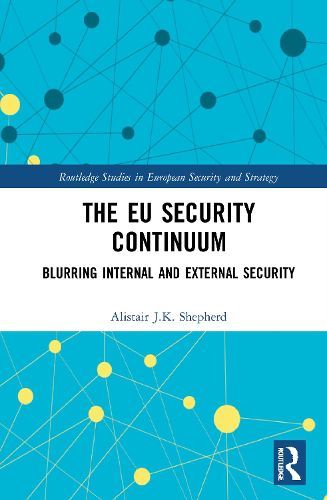Readings Newsletter
Become a Readings Member to make your shopping experience even easier.
Sign in or sign up for free!
You’re not far away from qualifying for FREE standard shipping within Australia
You’ve qualified for FREE standard shipping within Australia
The cart is loading…






This book examines how internal and external security are blurring at the EU level, and the implications this has for EU security governance and the EU as a security actor.
The EU claims that ‘internal and external security are inseparable’ and requires a more integrated approach. This book critically assesses this claim in relation to the threats facing the EU, its responses to them, and the practical and normative implications for EU security governance and actorness. It sets out a novel conceptual framework - the EU security continuum - to examine the ways and extent to which internal and external security are blurring along three axes: geographic, bureaucratic, and functional. This is done through an analysis of four key security issues, regional conflict, terrorism, organised crime, and cybersecurity. The book demonstrates that, to varying degrees, these security threats and/or responses do transcend boundaries. However, institutional turf wars and capability silos hamper the EU’s integrated approach and, therefore, its management of transboundary security threats. Yet, the EU’s pursuit of an integrated approach is reframing its claimed normative distinctiveness toward a more practical one, based on a transnational and multidimensional approach. Such a rearticulation, if implemented, would make the EU a genuinely transboundary security actor, properly structured and equipped to tackle the 21st century’s internal-external security continuum.
This book will be of much interest to students of European Security, EU politics, and international relations.
$9.00 standard shipping within Australia
FREE standard shipping within Australia for orders over $100.00
Express & International shipping calculated at checkout
This book examines how internal and external security are blurring at the EU level, and the implications this has for EU security governance and the EU as a security actor.
The EU claims that ‘internal and external security are inseparable’ and requires a more integrated approach. This book critically assesses this claim in relation to the threats facing the EU, its responses to them, and the practical and normative implications for EU security governance and actorness. It sets out a novel conceptual framework - the EU security continuum - to examine the ways and extent to which internal and external security are blurring along three axes: geographic, bureaucratic, and functional. This is done through an analysis of four key security issues, regional conflict, terrorism, organised crime, and cybersecurity. The book demonstrates that, to varying degrees, these security threats and/or responses do transcend boundaries. However, institutional turf wars and capability silos hamper the EU’s integrated approach and, therefore, its management of transboundary security threats. Yet, the EU’s pursuit of an integrated approach is reframing its claimed normative distinctiveness toward a more practical one, based on a transnational and multidimensional approach. Such a rearticulation, if implemented, would make the EU a genuinely transboundary security actor, properly structured and equipped to tackle the 21st century’s internal-external security continuum.
This book will be of much interest to students of European Security, EU politics, and international relations.